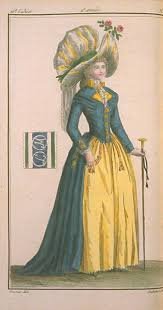A Journey Through Fashion History: From Ancient Attire to Modern Chic
Fashion is much more than clothing; it’s a reflection of society, culture, and individuality. The evolution of fashion tells a story of changing tastes, technological advancements, and cultural shifts. Let’s embark on a journey through fashion history, exploring the styles that have shaped our wardrobes and influenced our lives.
Ancient Beginnings

Fashion’s roots trace back to ancient civilizations, where attire was more than just protection from the elements. In ancient Egypt, linen garments were adorned with intricate beadwork and embroidery, signaling both social status and religious affiliation. Similarly, in Mesopotamia, layered garments and elaborate headdresses showcased the importance of textiles in expressing social hierarchy.
In ancient Greece and Rome, fashion became a more structured reflection of societal norms. The Greeks popularized the chiton, a draped garment that emphasized fluidity and movement. Romans adapted this with the tunic and togas, garments that often signified one’s role and status in society.
Medieval and Renaissance Flourishes

As Europe transitioned into the medieval period, fashion became a means of displaying wealth and nobility. The elaborate gowns of the Middle Ages, often adorned with furs and intricate embroidery, were a testament to the wearer’s social standing. The period also saw the emergence of the codpiece, a distinct and sometimes controversial fashion accessory.
The Renaissance brought about a revival of classical aesthetics, with fashion becoming more extravagant and ornate. The period was characterized by luxurious fabrics, such as velvet and brocade, and the introduction of elaborate accessories. The iconic ruffs and elaborate gowns of this era reflected a renewed interest in art, culture, and humanism.
The Enlightenment and Beyond

The 18th century, marked by the Enlightenment, saw fashion evolve into a more refined and elegant expression of individuality. The Rococo period introduced delicate, pastel-colored garments with intricate detailing, while the later part of the century, known as the Neoclassical era, embraced simpler lines and classical inspirations.
The 19th century ushered in dramatic changes with the Industrial Revolution. The advent of mechanized textile production made fashion more accessible and varied. The Regency and Victorian eras each had their distinctive styles, from the Empire waistlines of the Regency period to the tightly cinched corsets of the Victorian era.
20th Century Transformations

The 20th century was a whirlwind of fashion revolutions, driven by both social change and technological innovation. The Roaring Twenties brought about the flapper dress, symbolizing a break from traditional norms and a new sense of freedom for women. The mid-century saw the rise of iconic designers like Christian Dior, whose “New Look” redefined feminine elegance with its voluminous skirts and cinched waists.
The late 20th century witnessed a diverse array of styles, from the punk rock movement’s rebellious fashion statements to the minimalism of the 1990s. Designers like Yves Saint Laurent and Gianni Versace pushed boundaries, blending art, culture, and fashion in innovative ways.
21st Century and Future Trends

Today, fashion is a global phenomenon, with influences from all corners of the world shaping contemporary styles. The rise of social media has democratized fashion, allowing trends to spread rapidly and providing a platform for emerging designers. Sustainability has also become a critical focus, as the industry grapples with its environmental impact.
The future of fashion promises even more innovation, with advancements in technology, such as 3D printing and smart textiles, poised to revolutionize how we create and experience clothing. As we continue to blend technology with creativity, fashion will undoubtedly keep evolving, reflecting our ever-changing world.
Conclusion
Fashion history is a rich tapestry woven from countless threads of culture, creativity, and change. From the draped garments of ancient civilizations to the cutting-edge designs of today, each era has contributed to the ever-evolving narrative of style. As we look to the future, we can appreciate the journey that has brought us here and anticipate the exciting transformations yet to come.
Fashion, after all, is not just about what we wear but how we express our identities and connect with the world around us. Whether you’re drawn to historical elegance or contemporary innovation, fashion continues to be a vibrant and dynamic force in our lives.


